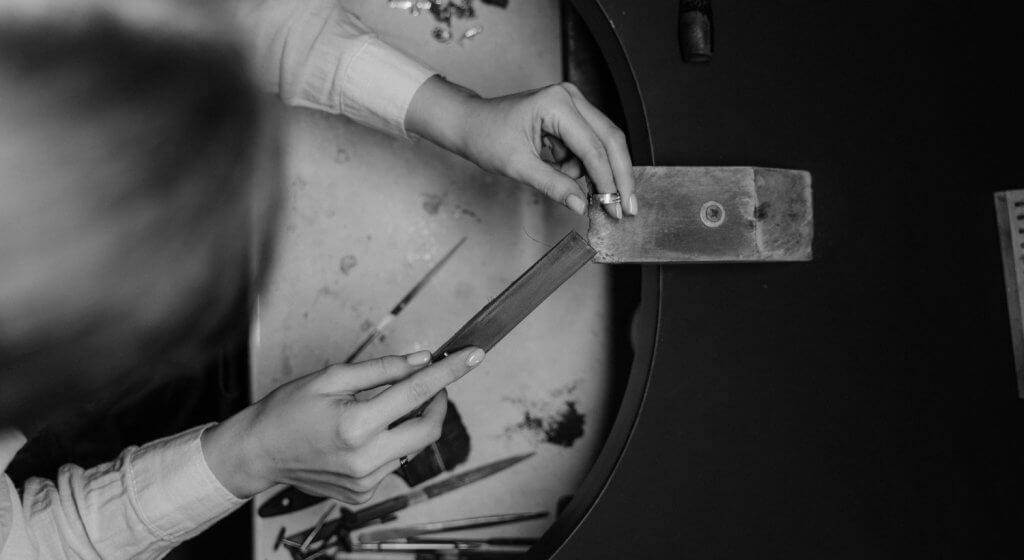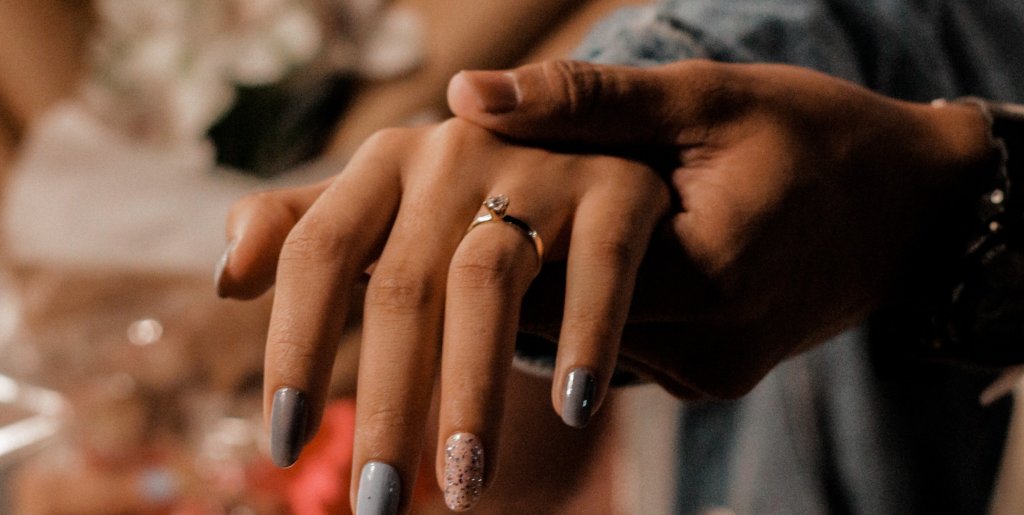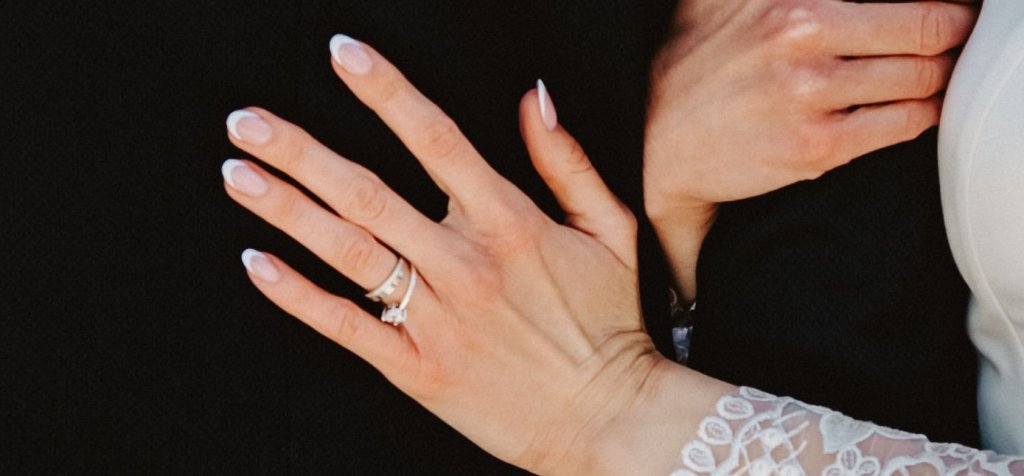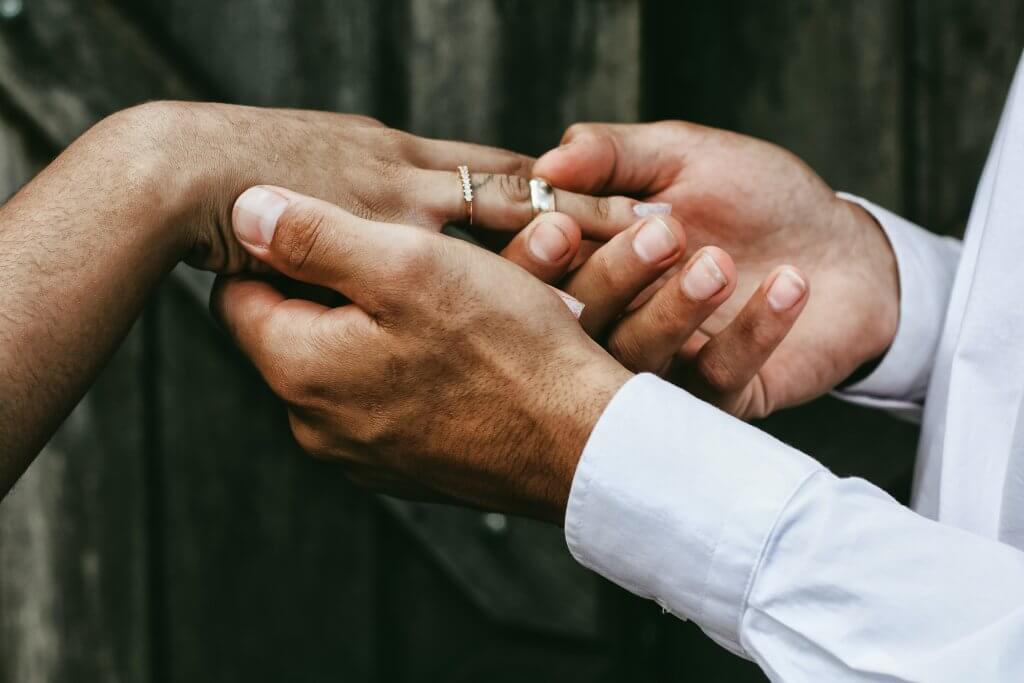The Art Of Ring Making: A Behind-The-Scenes Look
Key Takeaways
- The first thing a jeweler will do when creating a ring is draw up a detailed design.
- A ring is then either cast or forged, although forged rings are preferable.
- A cast ring is one that has been created by pouring molten metal being poured into a mold before being cooled.
- There is less skill involved with casting compared to forging, and forging will generally create a stronger ring.
- It is easier for modifications to be made. Even mixed metal rings are easier to handmake than to cast them from a mold.
- They are unique, beautiful, and created by masters of their trade.

While you could be forgiven for focusing almost all your attention on finding the perfect diamond, there’s a lot more to creating a beautiful engagement ring than the stone sitting at its center.
At WillYou.Net, we’re generally proponents of shoppers choosing to custom design their engagement rings. It’s not only a great way to give your partner something truly unique and from-the-heart, but also the best option for making the most of your chosen jeweler’s skill, expertise, and creativity. Working with them on a design that integrates a little of you into it is, our opinion, the best way to complement your diamond.
But, whatever route you take, it’s worth knowing what goes on between the moment you make your choice, and the moment you come to pick it up and see it all put together for the first time.
How do Jewelers Make a Ring?
When handmaking a ring, the first thing ant jeweler will do is draw up a detailed design – a little like a blueprint – of the ring, ensuring every proportion is right for the center stone. They may draw up a rough sketch in front of you, during your consultation, but it all depends on the jeweler, and how they prefer to approach the design process.
Even today, many, many jewelers choose to work by hand. It gives them total control over the entire process, and enables them to get that highly prized, hand-finished quality that distinguishes their work from the sea of mass-produced jewelry.
Working by hand means cutting, shaping, filing, and soldering each of the ring’s many components. Even a diamond solitaire – one of the simplest designs of all – requires many separate elements to be created and combined with the greatest precision in order for the ring to look beautiful, and to the job of keeping a diamond safe.
Are Rings Cast or Forged?
Some are cast, but many others are forged. Casting works best for larger volumes – say, for a brand with a national or international presence, and a high demand for orders – whereas forged rings (rings made by hand) are considered to be the better choice, for a number of reasons.
Below, we focus on the process of forging a ring. A ring that has been cast is one that has been created by pouring molten metal into a mold, then waiting for it to cool. There is far less skill involved – and, overall, there are fewer steps, even when the ring is ‘hand finished’.
Here’s how ring forging works…
The Drawing
Every beautiful ring begins with a beautiful drawing. Some jewelers continue to work with pencil and paper, sketching out a rough design before nailing down the specifics and creating a scale drawing of the final design. These days, others work using CAD (Computer Aided Design) software, with which they can create a detailed, digital model viewable from every angle.
In either case, this is where the creativity and skill of the jeweler first show through – and where you will catch your first glimpse of the ring that will one day sit on your partner’s finger.
After that, it will be time for the jeweler to begin creating and assembling the parts of the ring.
The shank
The shank (also known as the band, or the part of the ring that wraps around the finger) is created using a bar of metal – typically yellow, rose, or white gold, or platinum – which is rolled to a precise thickness (depending on the client’s specifications), then bent into a circle, then soldered closed with scrap gold or platinum, usually leftover from other projects. If any metal is cut off, it will also be saved for soldering.
If the shank features a particular design element like a knife-edge shank, the bar may be rolled to create that even, precise ridge across the top of the band.
If the shank features a pave, then a pendant drill is used to create very small, very accurate settings within the shank. The melee diamonds are placed one-by-one within those settings, and either the prongs are folded over, or tiny metal beads are added to keep those diamonds secure.
Delicate detailing like filigree requires incredible skill to pull off by hand. Metal wire is often used, twisted, and gradually worked into the highly ornate designs evocative of vintage engagement ring styles.
How do jewelers pick melee diamonds?
Melee diamonds aren’t typically chosen individually. Instead, a jeweler will regularly purchase a parcel of melee diamonds, which will all be of approximately the same levels of color and clarity, in order to ensure no visible discrepancies across a pavé or halo. Generally, melee diamonds are chosen to be the same color grade, or a slightly lower color grade, than the center stone, in order to complement that diamond’s color.
Prongs
There are a few different ways to create the center setting but, for the most part, jewelers will create the individual prongs before soldering them together, and soldering that center setting to the shank. If a basket setting is being created, the jeweler will create a small ring small enough to encircling a part of the diamond’s pavilion, and solder the prongs to that.
Prongs conceal small notches, into which the diamond’s girdle fits, in order to ensure a tight fit. These notches will be made according to the diamond’s precise measurements.
There are a number of different types of prongs, all of which subtly change the ring’s vibe.
Halos
The basic steps behind creating a halo are not dissimilar to the steps required to create a pavé shank – although, admittedly, the ‘canvas’ is a lot smaller. A small ring of metal – either the right size to ‘hug’ the edges of the diamond, or small enough to sit or ‘float’ beneath the diamond – is made, then a pendant drill is used to create regular spaces for the melee diamonds to sit in.
For double halos, a larger ring is made – and more settings for a larger quantity of melee diamonds are made with the drill.
Tension
These rings hold the diamond in place using tension alone. Jewelers create a single band with an opening that is, as you can imagine, a little smaller than the diameter or width of the diamond that will be placed within it. Prior to setting the diamond, they will create ‘seating cuts’ on the inside of the band, where the diamond’s girdle will sit. These keep the diamond from being able to slide out from between the two ends of the shank.
After a final polish, a wide enough opening for the diamond to pass through is created using a special tool strong enough to widen the gap between the two ends of the shank and, once the diamond has been nestled within those seating cuts, the tool is removed and the tension necessary to hold the diamond in place is able to take hold.
Read more about the tension setting here.
Bezels
For bezels, a new piece of metal is rolled and bent into a circle, the same size as the circumference or perimeter of the diamond. A thin rim that will lie over the very edge of the diamond’s crown is created (this will keep it in place), and the open ends soldered together during the setting process.
Are Handmade Rings Better?
In general, yes, handmade rings are preferable to rings that have been cast.
There are plenty of reasons for this. For starters, handmade rings (when made to a high standard) are generally a lot stronger than cast rings – but more on that below.
For another, handmade rings are subjected to a continual process of quality assurance from the jeweler. As they work, they can make slight adjustments for strength or beauty, and they can exercise full control over the final piece, instead of simply waiting for the cast metal to cool.
What’s more, handmade rings are unique. They are not one in a long line of identical pieces. Being produced for the mass market – they are works of art, created by masters of their trade, and designed with a single wearer in mind. This is one of the reasons we are generally left unimpressed by designers who work through ‘affiliate’ jewelers, and produce an incredibly high volume of orders each and every month. The personability and uniqueness of a ring is, unfortunately, lost unless you can work directly with your jeweler, and take advantage of their craft.
Finally, it’s a lot easier for modifications to be made. Even mixed metal engagement rings are easier to handmake than they are to cast from a mold.
Why are handmade rings stronger?
The added strength is primarily down to the fact that, as the jeweler works the metal used to create a ring, it actually starts to harden and grow stronger.
Metal that has been cast within a mold doesn’t undergo this intensive process and, for that reason, doesn’t possess the same level of strength.
Also, take into consideration the fact that, under the constant watch of the jeweler working on it, any potential issues can be circumvented or, if necessary, fixed early on. In the mold, a cast ring can take on slight imperfections like areas of crystallization or other faults. If they’re not spotted early enough, they can cause major issues for the wearer – a big weakness when you’re comparing cast rings with handmade rings.
Are Handmade Rings More Expensive?
Not necessarily. It all depends on the design, and the jeweler making it.
Mass produced pieces aren’t necessarily cheaper, since a lot of the big designers of bridal jewelry have strong enough reputations to charge a premium for their work.
As always, however, it’s down to the individual jeweler how much their charge for their time, skill, and creativity. This is something you’ll want to discuss during your consultation, so that you can both ensure that you are on the same page over the cost and complexity of the project.
All told, however, designing a custom ring is rarely as expensive as shoppers expect it to be.
How long does it take to make a ring?
Once again, it depends on the design but, generally, a ring will take around four to six weeks to be completed. Keep in mind that that figure includes the design stage.
We always work on the assumption that it’s a lot better for you to wind up with the ring sooner than you need it, rather than later. There will always be places to hide a ring – or, if not, your jeweler can always hold onto your ring until you’re ready to pick it up – but, depending on what you’ve got planned for your proposal, there aren’t always ways to delay the big moment.
Keep in mind that more complicated designs inevitably take longer, but that you can’t guarantee a super-fast turnaround on any bespoke design.

Mar 26, 2022 By Willyou.net
A Guide To Choosing The Perfect Temporary Engagement Ring

Mar 26, 2022 By Willyou.net
Heirloom Diamonds: A Family Tradition Symbol Of Love








